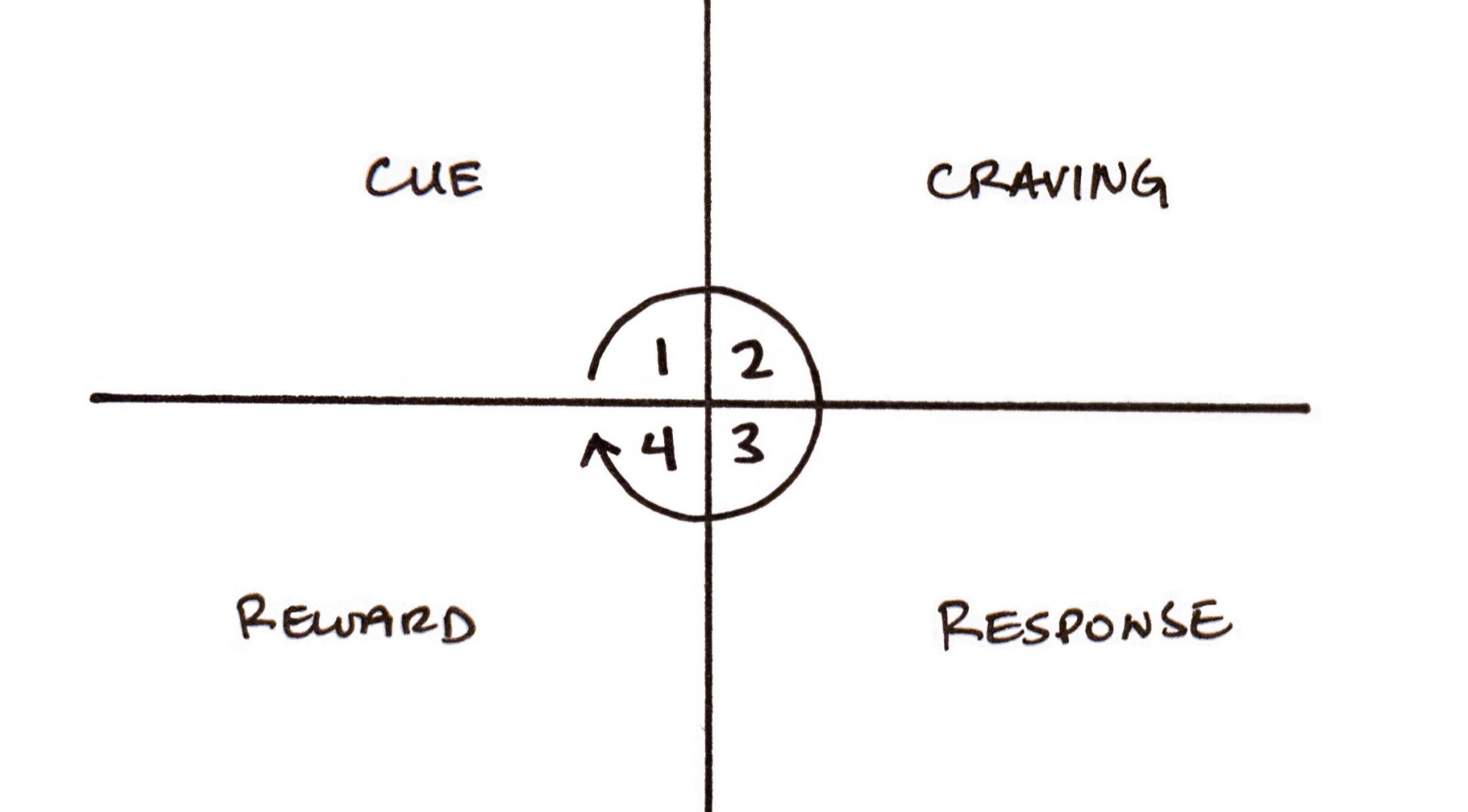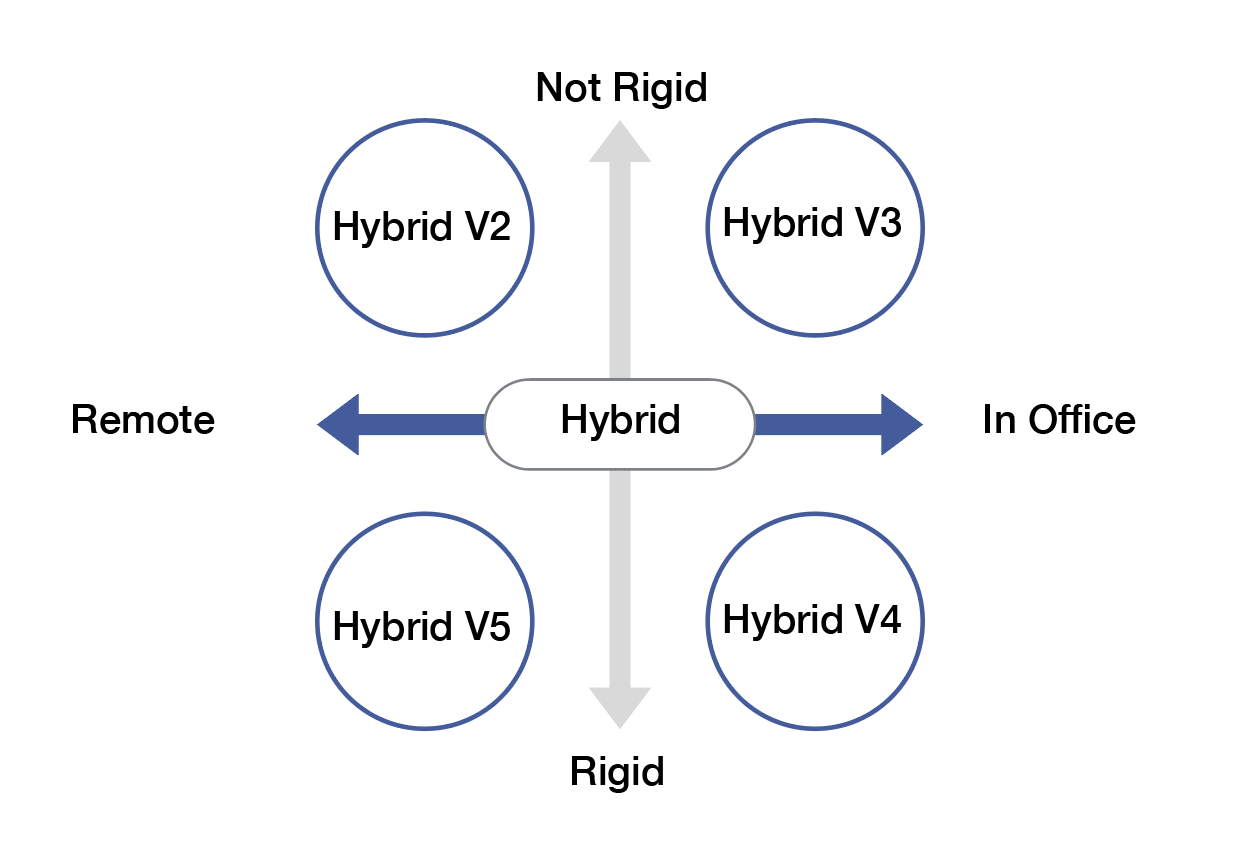
The blog of Affordances LLC.
How Habits Will Affect Your “Return To Office”
Employees working from home are operating with new sets habits. Breaking them would be difficult.
For over two years many knowledge workers have been working from anywhere, but mostly from home. They’ve worked from couches, from kitchen tables, from islands, and in some cases - resorts. Now that the pandemic has begun to wain, employers are finally setting return to office dates again. However, they may hit an unexpected snag in the form of preexisting habits.
How Habits Form
Habits are formed by the repetition of actions over time. A habit is actually a series of actions involving a cue, craving, response, and finally a reward.
Source: James Clear Atomic Habits
A real life example of this can be found in the Cinnabon franchise. They put their stores at the entry / exit of malls. You enter into the smell of Cinnabon and this creates a craving. By the time you’re on your way out the smell hits you again and you respond by just getting a “small” Cinnabon. You are rewarded with gooey goodness and a sugar rush. Unfortunately the more this happens the harder it will be to say NO to the Cinnabon.
Why It’s So Hard To Break Existing Habits?
Existing habits are extremely hard to break. Anyone how’s tried to give up sweet treats, or try dry January knows how hard it is to change the way you do things. This extends to all sorts of habits, including where and how we work. Normally we just call this our “routine.” Over time habits form grooves of sorts in our brains that make them extremely hard to break.
Many of us have been forming a new habit of working from home (or whoever) for the past two years. In habit formation world that’s a very long time. The habit of working from home and not going to the office is carved into our brains.
What To Do About Your “Return To Office” Plans
As James Clear outlines in his recent book “Atomic Habits,” in order to create a new habit you have to make it obvious, attractive, easy, and satisfying. To break a habit you have to make it invisible, unattractive, difficult, and unsatisfying.
In the context of going to the office, it is not just one habit, but a larger “stack” of habits that take us from getting ready in the morning to getting out the door, and finally into the office setting. Breaking one habit can be hard enough but breaking multiple stacked habits is extremely difficult.
When companies order people back to the office without input and set a “return to office” date it triggers something called reactance. Reactance is a human tendency to react to being told what to do by maintaining our personal freedom by doing the opposite. So you tell someone to return to “work” and they say “I resign.”
Unfortunately, this is likely to put a dent into many companies return to office plans as they exist today. To make working from home unattractive or difficult would quickly create a toxic culture situation on the part of the company. This could create bad feedback if those employees who feel mistreated decide to leave due to a negative culture experience. So, what can employers do to avoid these issues?
Taking a People First Strategy
Companies that want to lead the future of work are better off focusing on building new habits vs breaking existing ones. We encourage companies to engage in feedback sessions with employees before they make any decisions, and then begin planning at business unit levels for how / when they will gather intentionally moving forward. If you intentionally create a habit of bringing people together for a specific reason and slowly repeat over time, employees will naturally form a habit of coming together.
Building new habits is always going to be easier than breaking existing / replacing existing ones. In a world where there’s 3.9 % unemployment and employees largely have the option to walk away into a situation more aligned with their current habits, taking a people first strategy will enable more successful outcomes.
Want to know more? Feel free to reach out to us directly or find us here or on LinkedIn.
How Binary Bias Is Affecting Your Workplace Decisions
It’s us or them. You’re in or you’re out!! You’re smart or you’re dumb. You’re remote or you’re in office. What do all these statements have in common? They’re binary.
Hi! We’re Affordances. An advisory team that uses design thinking to create better outcomes for workplace teams. With this blog post we’re exploring how Binary Bias can have an effect on our Workplace decisions.
Two Kinds
As humans we love to categorize things. It’s a survival instinct that has helped us survive for generations. However, things in life rarely fit into neat buckets or are in fact binary. As Adam Grant points out in his latest book Think Again, “It’s a basic human tendency to seek clarity and closure by simplifying a complex continuum into two categories.” Closure and clarity are great words to focus on for the world of workplace right now. Closure is something all employees and employers could use at this point. The seemingly endless discussions of how to address our responses to covid have grown tiresome. We’re starting to burn out on them, but we should be cautious.
“It’s a basic human tendency to seek clarity and closure by simplifying a complex continuum into two categories.” - Adam Grant, Think Again
Knowing this it should not come as any surprise that in discussions about the future of work and the future of the workplace we can see this bias emerge quite often. Just browse your LinkedIn feed (10 Reasons You’re Wrong About Remote), company newsletters, or even internal company discussions and it is noticeable. We must be vigilant to avoid binary bias. The truth is that there is a wide spectrum of workplace options for any company.
A Spectrum of Workplaces
A logical next step is to ask how we can combat this bias in our internal and public discussions about the future of work/place? In his book Grant points out that the simplest solution for combating this bias is what he calls “complexifying.” By showing the actual range of options that are available we can help ourselves to think differently and avoid this bias.
We’ve sketched a quick view below of what that spectrum might look like from a workplace perspective but even this chart could present as biased. It’s hard to write nuance into a deck / image. Each of these options could then have 100 tweaks / options within them.
We know from recent surveys that opinions on how many days employees want to be in the office varies. More importantly we also know the opinions on the future work also diverge even further when comparing employees vs executives. This highlights that each company needs to openly discuss, define, and discuss again what the future of their work/place is. Acknowledging the complexity is the first step to building a better future.
An Iterative Process
Once you’ve acknowledged that the spectrum of workplace options is broad you can start to think about charting the right path for your team. We suggest beginning by creating common definitions (understanding), assessing your company goals, and then aligning them with an appropriate workplace plan. Moving forward we’d advise all companies to consider creating a unique / bespoke solution for their teams. From here we suggest continuing to improve by doing small tests and iterating continually with your teams. Just like any product, your workplace will get better over time if you take on user feedback.


